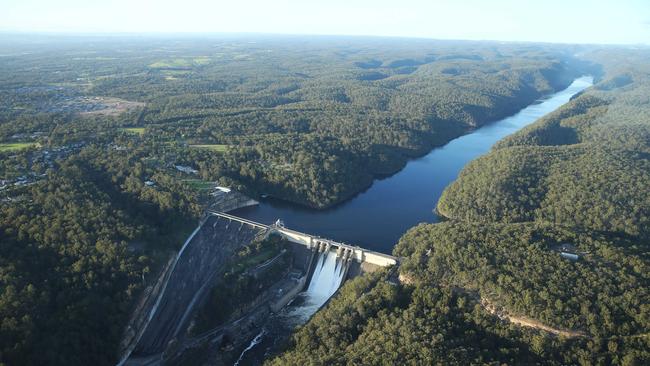Warragamba Dam heritage study ‘risks Indigenous sites’
The cultural heritage assessment of the proposed extension of Warragamba Dam has been labelled ‘inadequate’ by an eminent archaeologist.

One of Australia’s eminent archaeologists has labelled the cultural heritage assessment of the proposed extension of Warragamba Dam as inadequate, saying proceeding with the project will “greatly diminish’’ significant Indigenous sites, some potentially more than 40,000 years old.
Val Attenbrow, the principal archaeological research scientist at the Australian Museum, said proposed methods of mitigating damage to culturally significant sites were “indirect and inadequate”, and underlined three major failings in the NSW government’s environmental impact statement.
Not undertaking subsurface testing of artefact deposits meant the assessment “cannot portray a valid assessment of the archaeological sites and places described in the report”; the EIS downplays the scientific significance of the archaeological sites and places; and does not give adequate consideration to the high cultural values of the landscape.
The Perrottet government’s $1.6bn plan intends to extend the Warragamba Dam wall, in Sydney’s west, by up to 17m, creating additional airspace to hold back water during flooding events.
Critics of the project argue that the raising will flood thousands of hectares of Blue Mountains National Park, risking more than 1000 culturally significant indigenous heritage sites.
Dr Attenbrow, the recipient of the Australian Archaeological Association’s highest award for outstanding and sustained contributions to the field of archaeology, wrote the report after being engaged by the Environmental Defender’s Office, which is acting on behalf of the Gundungurra people, the area’s traditional owners.
“All archaeological sites and places in the study area would be inundated at some stage during the proposed project and will become greatly diminished in value and significance, with some likely to have total loss of value,” Dr Attenbrow said.
Given the large number of archaeological sites, places and “cultural places” with “high known scientific value and the potential very high scientific value of the cultural landscape”, Dr Attenbrow said the “only conclusion that can be reached is that the project … should not proceed”.
“If the sites and places are inundated, the cultural landscape will be greatly diminished in cultural and scientific values,” she said.
“No proactive mitigation measures are possible and if the project proceeds, sites and places will be inundated and subject to a variety of detrimental natural processes.”
The methods proposed in the EIS to mitigate the damage to culturally significant sites – consultation, management, site recording and education – are “indirect and inadequate” when weighed up against the “loss of so many highly scientifically significant sites and places”.
In a statement WaterNSW said it would review submissions received during the public exhibition and “address the issues raised in a submissions report to the Department of Planning and Environment”.



To join the conversation, please log in. Don't have an account? Register
Join the conversation, you are commenting as Logout